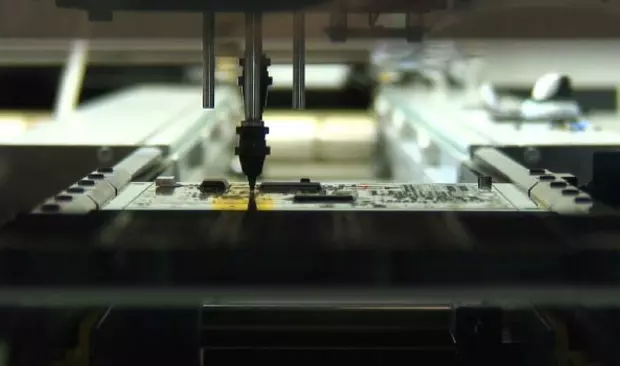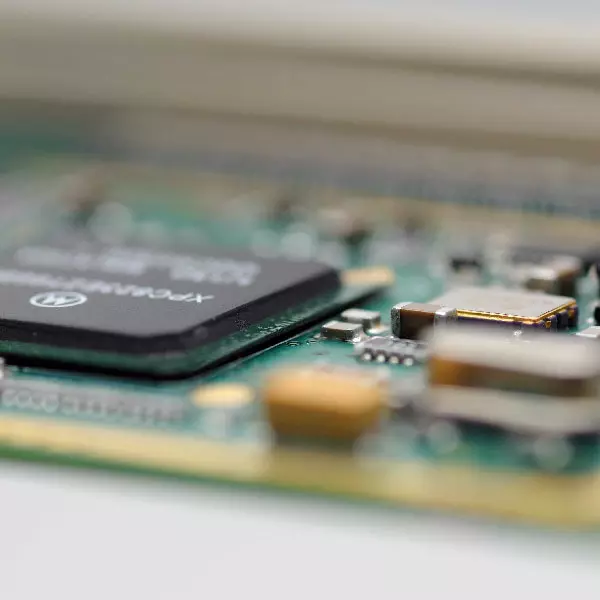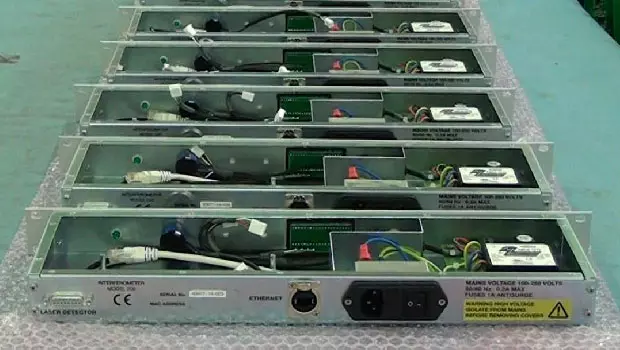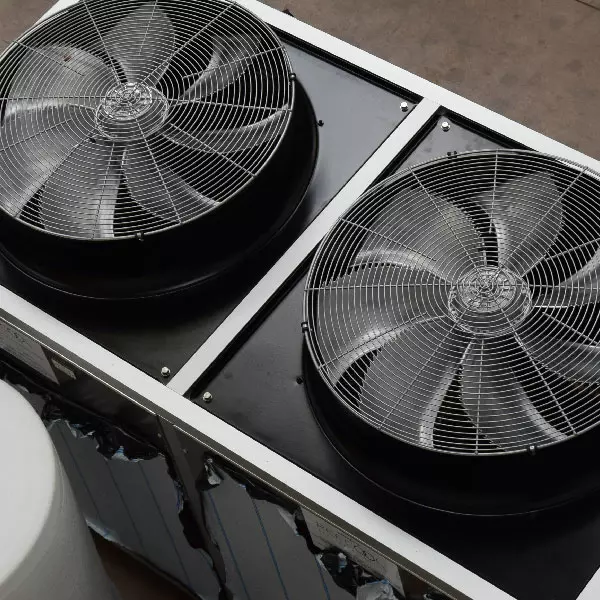MRP software for electronics manufacturers

Whether you manufacture your own electronics product or offer EMS (electronic manufacturing services), there are numerous reasons why MRP is essential to your business. In this article we explore some of the common problems that electronics manufacturers experience, how MRP solves them and what additional benefits it can provide.
It is common for some EMS companies to have started with their own product range. As time goes on, they branch out and offer manufacturing services to other companies. The inverse is also true, with EMS companies sometimes subsequently developing their own products. This often results in a steep learning curve when the company identifies that the systems they had in place are at best, inefficient and at worse no longer fit for purpose.
Why do Electronics Manufacturers need MRP software?
Manufacturing electronic products delivers many unique challenges. The finished product may need to be tracked by serial number and batch, and many of the components themselves may also require this level of traceability.
Bills of materials (BOMs) can be huge. A single board can often contain several thousand components, and companies generally will make dozens if not hundreds of different boards. If that didn't make matters complicated enough, many customers will demand Line Card Maintenance, where components from a particular manufacturer are specified. These might be available from several distributors, but alternative branded components will not be suitable.
Furthermore, while many components may be off-the-shelf items that are available from multiple local distributors there may be some, often coming from overseas, that have much longer lead times.
Purchasing can therefore often be a major drain on resources. Companies without an MRP system will have fragmented data about which products are purchased and from which companies.
Case Study: An EMS provider migrated to 123Insight after their in-house developed database purchasing system reached its limits. The company received an order for 500 units of three complex products, with delivery scheduled over three months. It took the MD almost two weeks to order the relevant parts - a process which in 123Insight now takes a couple of hours.

In addition to traceability of the components themselves, companies will often need to capture test results during the manufacturing process.
Even the equipment used during either manufacture or testing may need tracking. Devices such as measuring equipment need regular calibration to maintain and confirm accuracy. A good MRP system will allow you to keep check of calibration and maintenance schedules, while also ensuring that staff cannot use equipment that is out of calibration from being used.
How can MRP help quality for electronics manufacturers?
There are many different quality accreditations and management systems that electronics manufacturers may have to adhere to, depending on the industries they serve. For example, companies manufacturing medical electronics will require ISO13485 while those serving the aerospace industry will need AS9100.
EMS companies often need to offer both rapid prototyping and volume manufacturing - proving out a product before supplying it in larger quantities. The ability to create a bill of materials, manufacturing routing and subsequently quoting for an item quickly and accurately is vital. It can make the difference between winning and losing business, so having an MRP system that provides this structure is essential.
Manufacturing software can also control quality based on staff qualifications, with many staff often receiving training to IPC industry standards. These are used by the electronics industry to standardise the assembly and production requirements of electronic equipment. There are some IPC standards relating to materials that can be used, how they perform, how they should be inspected, along with assembly guidelines. It is common for certain key staff to be trained to higher levels, so keeping track of who is qualified to perform specific operations is paramount. A good MRP system will allow you to create a 'skills matrix', ensuring that only staff qualified to a particular level are able perform certain operations.
Auditing for electronics manufacturers traditionally would cause headaches, especially when information is held in separate systems across departments and often also relying on paper-based records.
Reworking of electronic components can be elegantly handled using 123Insight. Results can be captured against a serial number, with the software telling the operator if the unit has passed or failed. Another staff member could apply fixes to failed items, logging how long it took before passing it back to test or production. 123insight's SDK (Software Development Kit) can communicate with external equipment such as AOI (Automated Optical Inspection), flying probes or 'bed of nails' testing machines, ensuring robust data exchange and immediate access to test results when you need it.
Case study: An EMS manufacturer serving the medical sector implemented 123Insight, also selecting the SDK. This was linked to their external testing equipment, as well as linking BOM and part master data to other external systems, ensuring that all systems were using the same common data.

How do electronics manufacturers implement MRP?
A common issue for electronics companies is the sheer amount of data that needs to be migrated. A wide range of stocked components coupled with complex bills of materials and routings can seem overwhelming, however with a structured approach to data migration the task may not be the headache it appears and may often deliver several side-benefits.
Taking time to clean your data before transferring it to your new system allows you to sort out the dead wood. Use the 80/20 rule with your data, transferring the 80% that you've used, say, in the last couple of years. There's also no point in transferring customers or products that you know that were likely to be a one-off, and if they do suddenly spring back to life you can resurrect the data from your legacy systems as and when required.
It's also worth stepping back and seeing whether there is mileage in restructuring your data. For example, product numbers may be a mish-mash of different structures created by different people over the years. Taking the opportunity to restructure them into a common format can make it much easier for staff to transition to a new system if they know that all data now adheres to a common format and structure. Don't overcomplicate matters though - there's no need to make part numbers overly complex. A single 'category' within the part number will do rather than creating something that perhaps contains three or four levels of categorisation e.g. ABC-XYZ-123-123456. This only invites the possibility for error as staff grapple with double-digit codes. A good MRP system will allow you to quickly search and filter data without having to confuse matters further.
Once you have clean data, importing it into your new system doesn't have to be complicated. 123 Insight offers its MRP Data Import Toolkit, allowing you to easily import stock details, BOMs, resources, routings, customers, suppliers, opening stock balances, open sales orders and open purchase orders from Excel spreadsheets.
Case study: An EMS company that migrated to 123Insight from another system also used the Data Import Toolkit to respond to new enquiries. With BOMS often consisting of 150 lines containing up to 1000 parts, they now have a quick and easy method to load jobs, run MRP, identify the requirements and generate purchase orders.

The implementation process
When you start the implementation process you will invariably make some mistakes. It therefore makes sense to create your live system first, set up the basics and then replicate this into a test system. Then, once you have proven out various methodologies on the test system they can be implemented into the live structure.
The best way to help everyone to understand this is to create an implementation checklist, detailing every task for each area of the business. Each task should be grouped and prioritised so that the implementation process can be broken down into stages where each workflow can then be tested. Place an estimated time for completion against each one - once tasks are allocated to individuals it's then very easy to filter this so that everyone has clarity over their workload.
Here's a good suggestion of column headers:
- Group (e.g. Technical, Admin, Production, Stock etc.)
- Task description
- Estimated days for completion (could be whole or partial numbers)
- Critical task? (Yes/No)
- Deadline date
- Responsible person (allocated department head)
- Percentage completed
- Days left (calculated from estimated number of days minus by percentage complete)
What benefits can electronics manufacturers see after implementing MRP?
There are many obvious benefits to having a single manufacturing system covering everything from sales, purchasing, stock through to production and despatch. You will be able to respond to quote requests quicker and be able to see where any orders are within your facility. Accuracy in general will improve, which means you can quote more competitively and with confidence.
You will know what is truly in stock, and you'll be stocking more of the right product because you have better visibility of your slow and fast-moving items. Stocktakes that might previously have taken several days over a holiday period can be done on a rolling basis. With 123Mobile users can quickly perform 'ABC' checks of multiple stock items in a given location, maintaining constant accuracy.
Purely from a procurement perspective, the process of running MRP looks at demand and available stock, and then provides suggestions of what to order and from whom. 123Insight provides the user with a list of possible purchase orders, which can be raised and emailed with just a few clicks, drastically reducing the purchasing process.
The MRP process also takes care of generating works orders, with the manufacturing software providing visibility on current and future orders.
Case study: An EMS company saw an expected drop in stockholding in their first year of 25%, with stock inaccuracies virtually eliminated after replacing their Excel spreadsheets and paper-based systems with 123Insight. Paper usage also halved across the business.

Lead times will be more accurate, as you have a better grasp of what is in production or planned. Companies will often see a reduction in lead times, as there are fewer stock outages and production planning is also taken care of - everything happens when it is supposed to.
Audits that would previously span days can now be done in hours, with auditors never having to leave their desks. Each question of 'show where these parts came from or went' can be answered quickly and wholly.
There are also many intangible benefits which, when looked at singularly, only add a small advantage but overall can make drastic changes to a business, giving visibility in the way that each department needs to see things. For example, purchasing might buy resistors in reels of 1000 but Stores needs to see them as singular items.
Version control is another area that can see considerable advantages. With better control over the BOM in areas such as drawing numbers and issue levels it's never a problem if a customer needs to order older versions of a component, as the full history of which components are recorded and where to source them is immediately available.
With a common user interface and similar workflow process across departments it will be easier for companies to grow without requiring more administrative staff. Businesses that previously relied heavily on paper will no longer need to, as everything is held and linked together in a common system.
Case study: A company manufacturing refrigeration units replaced their paper-based and Excel systems with 123Insight across their two factory locations. They were subsequently able to grow the business by 240% with the same number of admin staff.

Summary
The electronics manufacturing industry has many areas that are common with other industries when it comes to MRP software, but by being able to manage those little differences is what will give you the edge.
Having a system that can competently handle the little nuances with this sector can allow you to grow your business and respond rapidly to change, while also freeing up staff from the mundane to focus on tasks that add more value.